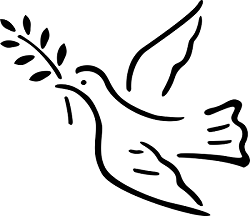[ad_1]
In the James Bond film Spectre, the protagonist’s arch-villain Blofeld stands in his secret desert base surrounded by well-armed cronies and banks of computers. He looks at agent 007 malevolently and finally admits the truth: “Me. It’s always been me, James. The author of all your pain.”
The West has a James Bond problem when it comes to its adversaries. It tends to see them through the simplistic archetype of a seemingly unstoppable mastermind villain always two steps ahead, pulling the invisible strings. And Russia’s actions in Africa are no different.
Ever since Russia first sent its Wagner mercenaries to the Central African Republic (CAR) in 2018 and effectively captured the regime of President Faustin-Archange Touadera, the West – and its media, its analysts, and its policymakers – have tended to overemphasise Moscow’s strength, reach, and influence on the African continent.
East meets west Africa
To be sure, Moscow is a potent player in Africa. Western awe for Russian operations reached its sad climax in the period from 2021 to 2023 as Moscow played a series of highly effective diplomatic and disinformation campaigns. Although not the primary cause, they certainly had a role in the ousting of the presidents of first Mali, then Burkina Faso, and finally Niger; the rise of three Moscow-friendly putschist regimes; and the upending of a failing, decade-old, French-led counterterror campaign in the region.
Moscow returned to the stage with a bang. The Kremlin perfectly read and then perfectly exploited the anger among the rank and file in the Sahelian armies, who felt they were being humiliated and fed into the meat grinder while Europeans sat pretty in armoured vehicles, their elites dining out on development aid.
Russia can move harder and faster than European countries burdened by pesky things like human rights legislation and arms export controls could ever hope to. “No wonder the Sahelian countries are turning to Russia. You call Moscow up, and by the time you finish, the stuff is already being loaded onto a plane,” one senior West African official recently explained. “You don’t need to worry about paperwork.” The almost-magical apparition of the Sahel’s equivalent of the ‘little green men’ shortly after any Sahelian putsch left many Western officials’ heads spinning. “By the time we’ve had time to set up a meeting to discuss a crisis, Russia has already moved in and set up shop,” said another earlier this year.
Take a step back and survey the field. Russia’s military operations around Africa are not succeeding, and Moscow is not setting itself up as a long-term partner for African governments.
This, combined with the monumental amount of Russian disinformation in Africa, easily lends itself to the unstoppable archvillain archetype so often used as shorthand to understand an increasingly complex and fractured world. But take a step back and survey the field. Russia’s military operations around Africa are not succeeding, and Moscow is not setting itself up as a long-term partner for African governments.
Stretched thin
The Africa Corps, the Wagner Group’s successor on the continent, has perhaps 1,000 men in Mali; a hundred or so in Burkina Faso; an unclear number in Niger and Sudan; and about 2,000 in the CAR. These deployments earn the Kremlin and its partners a decent amount of money through gold smuggling or weapon deals, as well as allowing Russia to play a low-level disruptive role. It has also successfully pushed out its narrative across armies of bot farms and paid influencers, and helps prop up authoritarian partners with schemes designed to avoid Western sanctions.
However, Russian forces in the Sahel are in some regards profoundly overstretched and exposed militarily; Moscow is losing credibility as a reliable partner for African governments. It is clear that Russian forces have scored a few military victories, but one which pro-Kremlin propagandists frequently cite is the symbolic northern Malian town of Kidal, which Malian and Russian forces retook in 2023. Undoubtedly, this bolstered morale and achieved personal goals for junta leader Colonel Assimi Goïta. But this could also be seen as a pyrrhic victory. The Malian Armed Forces and its Africa Corps allies are overstretched trying to maintain a presence in the centre, north, and northeast of the country, fighting against the Al Qaeda-allied Nusrat al-Islam (JNIM); the Islamic State in the Greater Sahara; and the Strategic Framework for the Defence of the People of Azawad (CSP-DPA), an alliance of predominantly Tuareg groups.
Two recent events encapsulate both this dire situation and how few solutions Russia has to what was long described as “France’s forever war.” First, in late July, a desert hit by the CSP-DPA and JNIM (allegedly with the support of Ukrainian intelligence) reportedly killed 84 Russian Africa Corps fighters and 47 Malian soldiers at Tinzaouten on the Algeria border. In response, Moscow and Bamako are now pummelling parts of northern Mali, seemingly at random, with Turkish drones lent to them by Burkina Faso. An August airstrike reportedly killed at least 21 civilians, including 11 children.
Then, while most of the world was focusing on exploding pagers in Lebanon in mid-September, the JNIM launched an ambitious attack in Mali on an army base and at the airport, reportedly killing dozens. If its capital, Bamako – the central pillar of Russian security efforts in the Sahel – is vulnerable, so are the Burkinabe and Nigerien capitals. Both have been almost encircled by sporadic jihadist attacks.
The myth
The simple truth is that everywhere Russia has sent in troops, the security situation is dramatically worse than when international forces were present. According to Armed Conflict Location and Event Data (ACLED) data for the Central Sahelian states, more than 26,000 people have been killed in Burkina Faso since 2016. But most of these deaths – more than 15,500 – occurred since Captain Ibrahim Traore came to power in a coup two years ago and took his country into Moscow’s orbit.
Sadly, it is very likely that late 2024 and 2025 will be far worse for Burkinabe citizens. Of course, this could be part of Moscow’s end goal. It is certainly not in Russia’s strategic interests to have a stable, democratic, and peaceful Sahel region on Europe’s southern flank.
This has given rise to a paradoxical situation. On one level, Russia dominates the information space in many African countries where it has military operations and looms larger than life in the minds of many Western diplomats. But at the same time, it is obvious to everyone that Russia simply does not have the financial or military heft to give its African partners governments anything other than bot farms, shoddy weapons, mercenaries for presidential protection, and – lest we forget – exploitative mining deals.
It would not be surprising if Russia’s “allies” on the continent soon felt that Moscow’s meagre offerings no longer suited their objectives and started looking for different partners. There is myth and there is reality when it comes to Russia in Africa. European diplomats should try to keep the reality in mind, stay diplomatically engaged, be humble about past errors, and work to expose what hostile powers are doing in the Sahel.
The European Council on Foreign Relations does not take collective positions. ECFR publications only represent the views of their individual authors.
[ad_2]Source link











